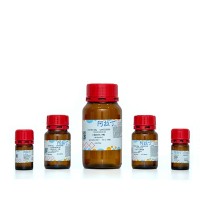In recent years, microscopy techniques have reached high sensitivities and excellent resolutions, far beyond the diffraction limit. However, images of biological specimens obtained with super-resolution instruments have the tendency of being dominated by spots. The quality or faithfulness of the observed structure depends in great manner on the labeling density achieved by affinity probes. To obtain the required high labeling densities, several problems still need to be addressed. Prevalent staining methodologies are mainly based on antibodies. Due to their large size (~10–15 nm, ~150 kDa), antibodies penetrate poorly into biological samples, find only few epitopes and position the fluorophores far from the intended targets (relative to the resolutions currently achieved). These problems drastically limit imaging efforts, irrespective of the quality of the microscopes. Recently, RNA-based affinity probes (termed aptamers, ~15 kDa) and camelid-derived small single-chain antibodies (termed nanobodies, ~13 kDa) are offering a possible solution. Both of these probes have an improved imaging performance, not only for diffraction-unlimited microscopy techniques but also for conventional microscopy. The effort to develop new affinity probes of smaller dimensions should go together with improving the preservation of biological samples. The extraordinary amount of details obtained by super-resolution microscopy also enhances the detection of artifacts that fixatives and detergents cause to cellular structures. Therefore, thorough optimizations of current methodologies of sample preparation are necessary to achieve stainings capable of representing genuine biological structures and accurate protein distributions. Eventually, new fixation and permeabilization procedures able to retain more faithfully the biological structure under investigation need to be developed in the light of the current microscopy technologies.






